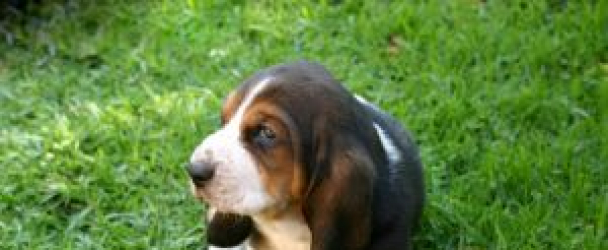WHO CAN HELP
but fall in love with that adorable puppy at the pet store or pound? Puppies are like babies, irresistible to all! But when you get your new puppy home and get him settled in, you are suddenly reminded that he doesn’t know that your clean house isn’t a repository for his bathroom needs. Contrary to popular opinion, house training your puppy can take a bit of time and be more difficult than you had anticipated. However, with these well tried and effective techniques, you can get your relationship with your new puppy off to a good start. These suggestions will smooth the way for your puppy and you to have a loving and positive, rather than frustrating experience, during the first few weeks you are together. With consistency, awareness and knowing how to handle his unavoidable mistakes, your puppy can learn the appropriate behavior quickly.
Tip #1 – CREATE A REGULAR AND CONSISTENT ROUTINE
It is extremely important that you and your puppy have a regular schedule. It is important that your puppy be given three to four meals per day, at consistent times. Take your puppy outside every two hours, directly after he eats each meal, and after waking up from a nap. Give him lots of praise and a treat if you like, immediately after he finishes outside. He needs to make the connection between his action and a rewarding experience. Take your puppy to the same spot outside consistently and he will soon recognize it as the place you want him to go, giving a term of your choice that he will learn….eventually using it to let him know what he needs to do (for example, “go potty”). A good idea is to take any materials used to clean up his messes in the house and put them in his “spot” in the yard to help your puppy understand it is the appropriate place for him to go.
Tip #2 – KEEP TRACK OF YOUR PUPPY.
An ounce of prevention is worth a pound of cure! Preventing your puppy from eliminating in the house is one of the best ways to speed along his house training. Keep track of where he is and prevent him from wandering away from you, all over the house, as he’ll think he can make messes wherever he goes. A good idea is to put a baby gate in a small room, perhaps in the bathroom or kitchen. If he’s in the kitchen, he has the added benefit of extra time with his new master, and more socialization. Be aware of behavior that may indicate a need to go out (squatting, walking in circles) and drop everything! If you keep him attached to you on a short leash, you can quickly and effectively get him out the door to his regular spot. Don’t forget to praise him with words, pets and treats!
Tip #3 – WHEN YOU’RE NOT ABLE TO KEEP TRACK
When you are too busy to keep good track of your puppy, or when you’re sleeping, it’s important to keep him located in a small area where he won’t want to urinate. Confine him to a place where he can lie down and turn around but not where he can run around. A part of the bathroom or laundry room is a good place to put up a baby gate and keep him from eliminating in the house. Another option is to put him in a crate. Crate training your puppy is usually quite easy, and here are some pointers to give you a clear idea of how to do it. A note about crate training for those who are concerned that it is uncomfortable or lonely for the puppy….. dogs by instinct are den animals, who feel safe and secure in the comfort of small, cozy spaces. Wild dogs spend a lot of their early lives near their dens. A crate can be a calming, cozy and safe space for your new puppy to be when you are not available, and if it’s small enough he’ll want to keep his space clean for short periods (then longer periods) of time. Make sure you take him to his outside spot as soon as you come back into the house, praising and treating your puppy as he eliminates outside.
Tip #4 – WHEN THERE’S AN ACCIDENT
How should you handle it when the inevitable accident occurs? Try to “catch him in the act!”. If you can startle him with a small noise and interrupt him, take him outside as quickly as possible to his outside spot and allow him to finish while praising and/or giving him a treat. If you don’t catch him in the act, but later, simply clean the mess up as your puppy won’t know why you are yelling at him or putting his nose in the mess. Doing these things can actually make your puppy afraid to go when he’s near you. When cleaning up the mess, be sure to do a thorough job so your puppy won’t return to the place in the house and eliminate again.
These 4 tips on how to train a puppy will give you the knowledge you need to speed the process up and get your new family member house trained quickly. They are well known and practiced methods for helping you and your new puppy develop a positive and trusting, rather than frustrating relationship. With consistency, awareness and knowing how to handle the process, you and your puppy are off to a great start!






